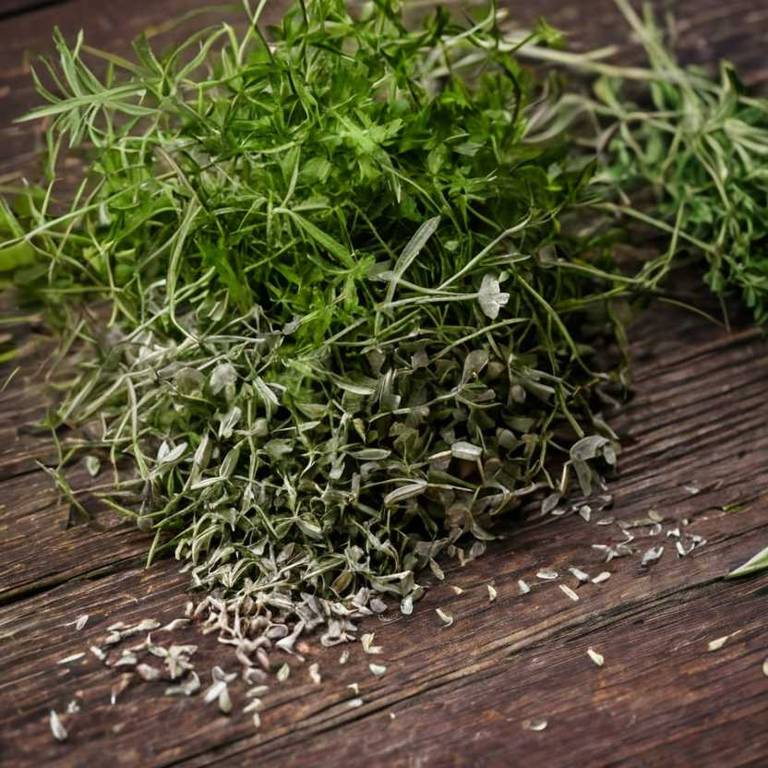By Leen Randell
Updated: Jul 06, 2024
What to know about Zostera marina (seagrass) before using it medicinally

Zostera marina, commonly known as seagrass, is a herb that has been utilized for its medicinal properties to improve respiratory health by alleviating symptoms of bronchitis and asthma.
As an aquatic plant, it requires specific horticultural conditions, including a saline environment and adequate sunlight, to thrive in shallow coastal waters. From a botanical standpoint, Zostera marina belongs to the family Zosteraceae and is characterized by its long, strap-like leaves and ability to form dense underwater meadows.
Historically, the herb has been mentioned in the works of ancient Greek physicians, including Hippocrates and Galen, who valued its therapeutic properties and used it in various treatments.
This article explains the medicinal, horticultural, botanical, and historical aspects of Zostera marina.
What are the medicinal properties of Zostera marina?
Zostera marina helps with treating various health issues, including digestive problems, inflammation, and skin conditions, due to its anti-inflammatory and antioxidant properties.
The active constituents responsible for the medicinal properties of Zostera marina include flavonoids, phenolic acids, and terpenoids, which exhibit potent antioxidant, anti-inflammatory, and antimicrobial activities.
The parts of the plant most used for medicinal purposes are the leaves and stems, which are rich in bioactive compounds and can be used fresh, dried, or in the form of extracts.
When used improperly, Zostera marina can cause allergic reactions, interact with certain medications, and exacerbate pre-existing conditions, such as asthma or kidney disease, due to its potential allergenic and toxic properties.
Precautions when using Zostera marina medicinally include proper identification and authentication of the plant material, adherence to recommended dosages, and consultation with a healthcare professional to avoid interactions with other medications or underlying health conditions.
What are the horticulural aspects of Zostera marina?
Zostera marina grow in shallow waters with high salinity (25-40 ppt) and water temperatures between 15-25°C. It thrives in areas with moderate to high levels of nutrients, typically between 1-5 μg/L of dissolved inorganic nitrogen.
For optimal growth, seagrass requires a stable sediment substrate with a mixture of sand, silt, and clay. Planting tips include transplanting seedlings or rhizome fragments 10-20 cm apart in well-draining sediment. Ensure adequate light penetration (at least 5% of surface irradiance) and monitor water depth to prevent excessive sedimentation.
Harvesting seagrass typically involves hand-picking or mechanical harvesting. To avoid damaging the rhizomes, harvest only the leaves and shoots. Timing is crucial: seagrass is most productive during the growing season (spring and summer) when temperatures are warm and nutrients are abundant.
Seagrass is susceptible to various pests and diseases, including eelgrass beetle, seagrass grub, and brown seagrass disease. Regular monitoring and prompt control measures can prevent infestations and reduce the risk of disease transmission.
What are the botanical aspects of Zostera marina?
Zostera marina is a perennial marine angiosperm with a short stem and long, narrow leaves that grow from 30-120 cm in length. Leaves are flat, linear, and have a prominent midrib, often with a wavy or undulate margin.
Taxonomically, Zostera marina belongs to the family Zosteraceae, order Alismatales, class Liliopsida, division Magnoliophyta, and kingdom Plantae. Its closest relatives are Halophila and Ruppiaceae. This classification reflects its morphological and anatomical characteristics.
Two variants of Zostera marina are known: the northern and southern variants, which differ in leaf and shoot morphology. The northern variant has leaves with a wider base and a more pronounced midrib, while the southern variant has narrower leaves with a more delicate texture.
Zostera marina is widely distributed in temperate and sub-Arctic regions, including the North Atlantic, the Mediterranean, and the coasts of Japan, China, and Australia. It thrives in shallow, coastal waters with sandy or muddy substrates.
The life cycle of Zostera marina is characterized by a short vegetative growth phase in spring and summer, followed by seed production in late summer or early autumn. Seeds germinate in autumn or winter, and young plants grow through the winter months, often forming large meadows by the following summer.
What are the historical aspects of Zostera marina?
Zostera marina is an ancient coastal plant species that has been used for various purposes by human societies for centuries. Its rhizomes were used as a food source, while its leaves were employed for crafts and basket-making.
In mythological references, Zostera marina was associated with Poseidon, the Greek god of the sea, who was said to have used seagrass to create the first forests. In Norse mythology, the goddess Freyja was connected to the plant, which was believed to have been her favorite among all the goddesses' possessions.
The symbolic meanings of Zostera marina vary across cultures. In some traditions, it represents protection, while in others, it symbolizes fertility and abundance. In certain Asian cultures, seagrass is believed to bring good fortune and prosperity.
Historical texts document the use of Zostera marina in ancient coastal societies. The Roman naturalist Pliny the Elder mentioned the plant in his book "Naturalis Historia", while the Greek geographer Ptolemy wrote about its presence in the Mediterranean Sea.
Archaeological finds, such as woven baskets and utensils, demonstrate the importance of Zostera marina in the lives of ancient coastal communities. In some areas, remains of seagrass houses and fishing tools have been discovered, providing evidence of the plant's role in human history.